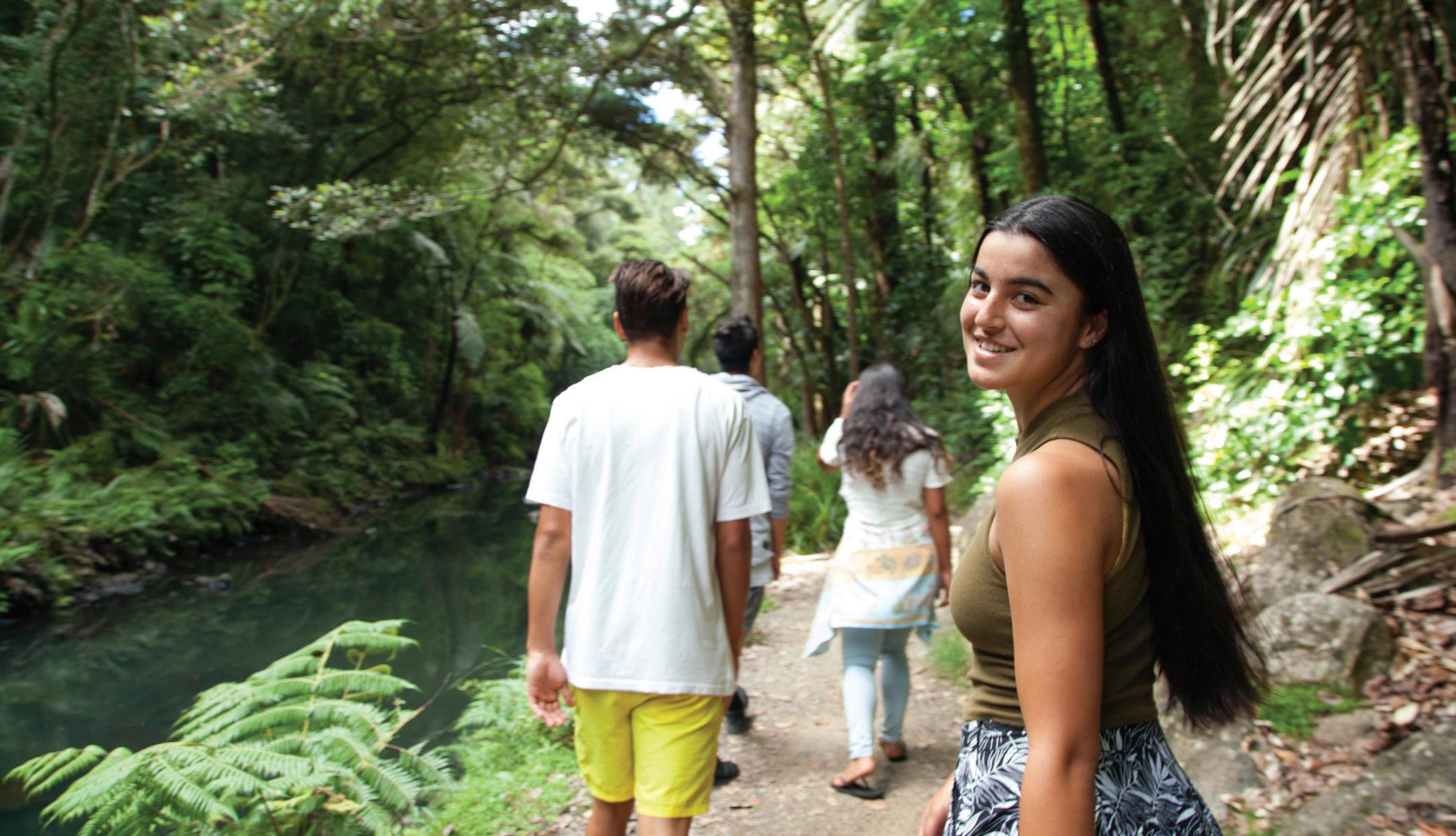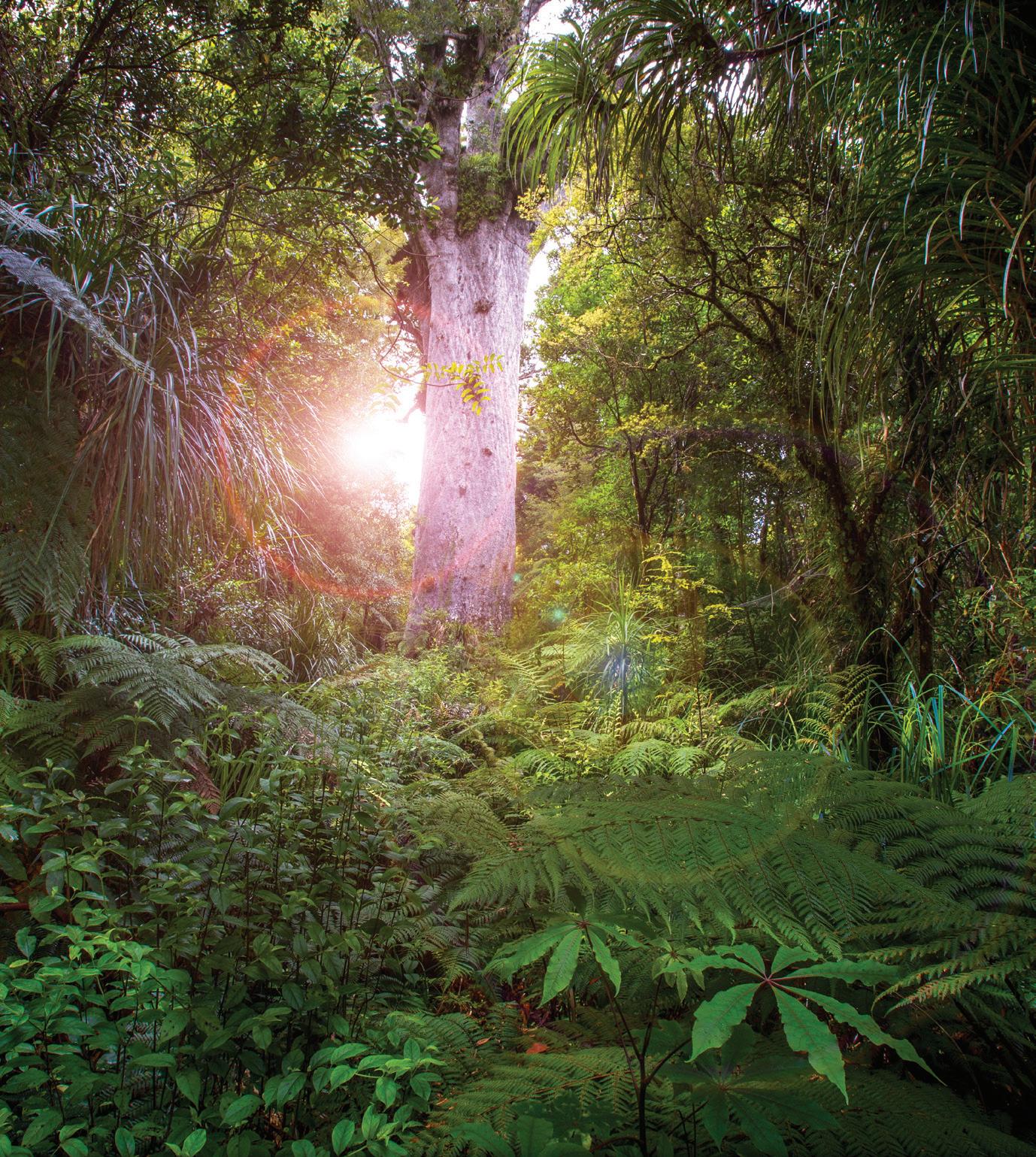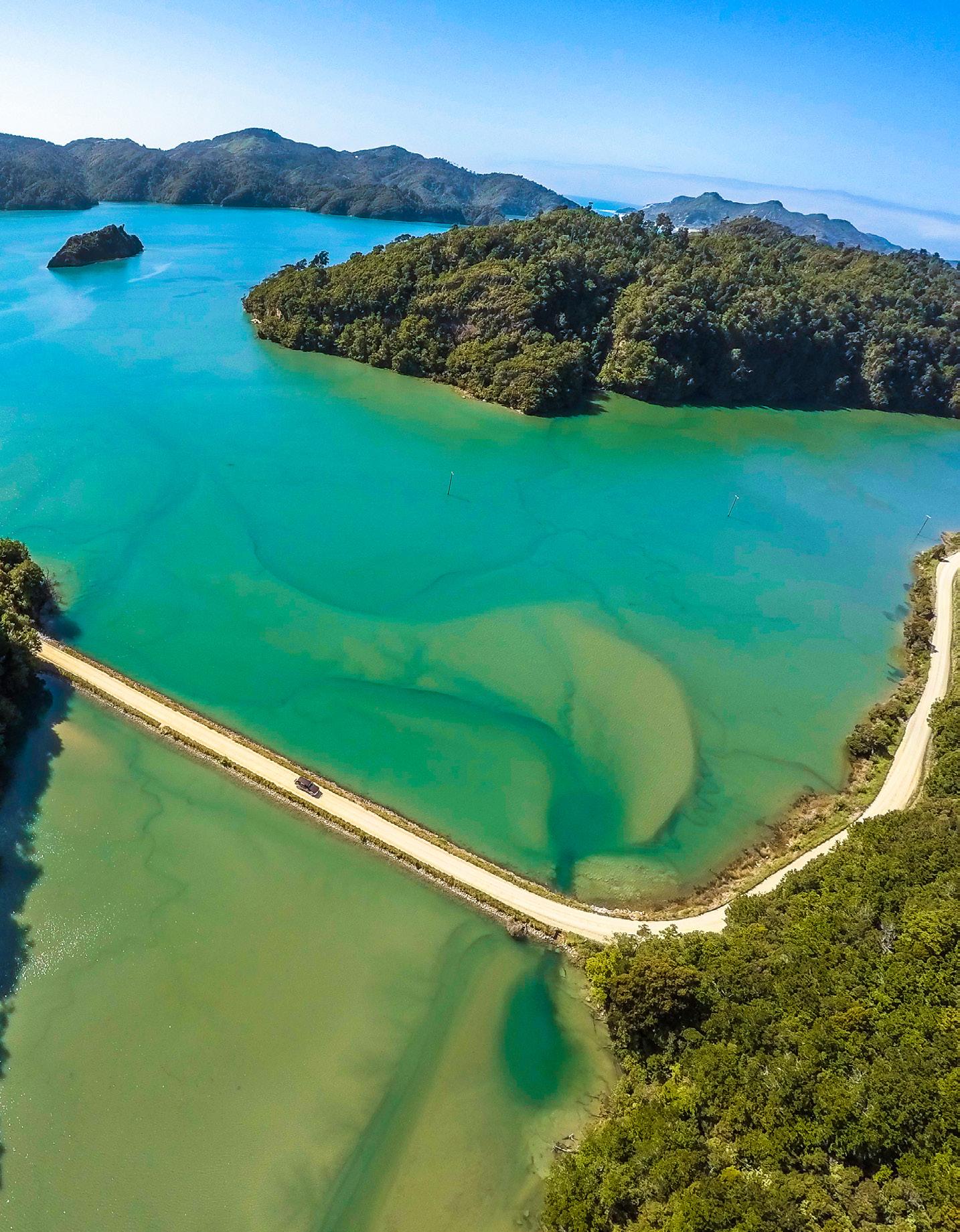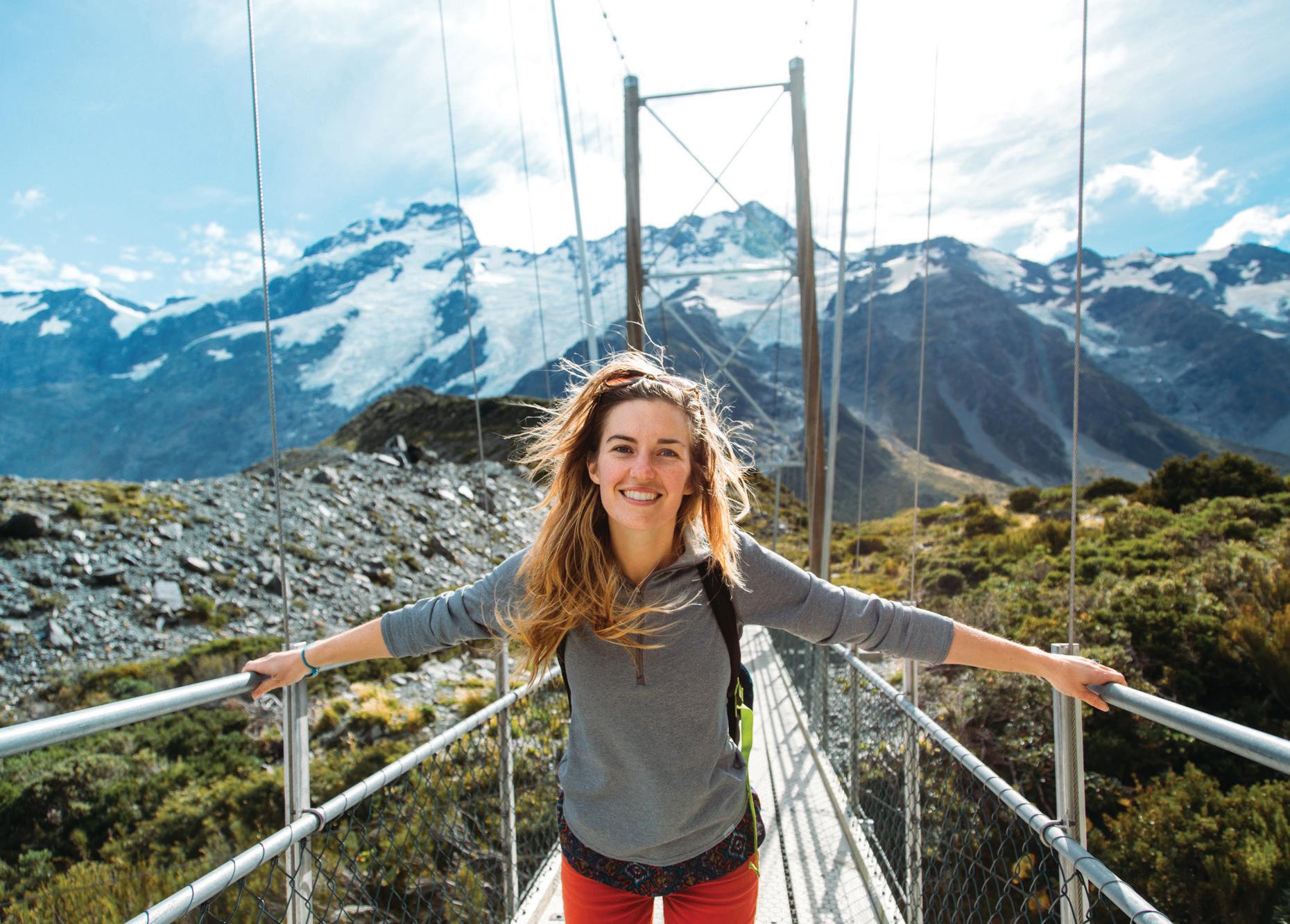
5 minute read
What’s the big deal with FOREST BATHING?
Here in Aotearoa we love swimming in the ocean, quick dips in the river and a soothing hot pool, but what exactly is forest bathing? And why is New Zealand such a good place to try it?
Advertisement
Shinrin-yoku (that’s forest bathing to you and I) was first coined in Japan to describe an all-natural antidote to workplace burnout. But don’t be fooled by the word bathing: no togs are required for this recreational must-do.
The idea of forest bathing encourages a full retreat into nature, but one that goes much deeper than simply enjoying the great outdoors. Fundamentally, it’s about asking yourself, ‘when was the last time I properly used all five senses to lose myself in the environment?’ Going for a brisk walk this is not; the purpose of forest bathing isn’t to reach anywhere specific, or in a certain timeframe, it’s about taking the opportunity to discover the shades, shapes, sounds and smells of the forest – with seemingly no intention, other than that it’s good for you.
Exposure to trees, fresh air, blue sky and birdsong is believed to help bolster the immune system, counter illnesses, reduce stress, lower blood pressure and aid sleep. Pretty important stuff in 2020.
Luckily for us Kiwis, we have enough forest on our fair isles to bathe away an eternity, but if you’re after something more substantial than your back-garden beech tree, we’ve picked five of the best places to shinrin-yoku.
But first, the rules:
Ditch devices –
you’re after bird twitter not social Twitter.
Ignore the suggested routes –
try to be spontaneous without compromising your safety.
Let your senses lead -
follow whatever looks, smells or sounds good.
Listen –
where possible, close your eyes and open your ears.
How can I be Enviro-friendly?
Leave no trace: carry out exactly what you carry in, including rubbish. Stay on marked tracks to protect the natural environment, and plan your trip well ahead so your environmental impact is minimal. Toilets aren’t always readily available, so be aware on which tracks you might need to ‘dig and dispose’.
HOT TIP: Many of New Zealand’s native species are endangered. Kauri dieback is an uncurable disease killing kauri trees. Please keep to the tracks, clean all your footwear and equipment (there are often cleaning stations) and stay away from tree roots.
Goblin Forest, Taranaki, North Island
For those reluctant to coax out their inner tree-hugger, you don’t need to touch anything in Goblin Forest in order to feel it: the goose pimples are instantaneous. As a result of kāmahi trees growing all over the trunks of pre-existing trees, the forest now seems somewhat hairy: enchanting to some, eerie to others – but like anything not quite the norm, seriously fascinating. Reach out and touch if you dare or wait 1 to be tickled as you brush past creeping branches. Tell yourself the whispers are just wind and goblins don’t exist; by the time you remerge from the bush, you won’t be convinced of either.
Waipōua Forest, Dargaville, North Island
There’s a figure in this forest that overshadows all of its inhabitants both physically and metaphorically. Tāne Mahuta is the country’s largest kauri tree. Known as the Lord of the Forest, its trunk measures an astounding 4.4 metres and reaches a height of 18 metres. Believed to be approximately 2000 years old, Tāne Mahuta is practically a teenager when compared to Te Matua Ngahere: also a resident of Waipōua Forest, this grandfatherly entity is between 2500 and 3000 years old. If you’re going to forest bathe anywhere, it might as well be with these two noblemen.

Tāne Mahuta, Waipōua Forest, Dargaville
© David Kirkland
Catlins Forest Park, The Catlins, South Island
It’s officially a 20-minute hike to McLean Falls, but that would incite purpose, and forest bathing has no purpose, so linger for as long as you like. It’s a sheltered, thick forest, worthy of a Grimms Brothers’ fairy tale and every ethereal moniker bestowed upon it. Negotiate a route between the drooping mosses that hang from branches like honey off a spoon; spy slivers of sun seeping through the canopy and listen to the rush of water tumbling down McLean’s waterfall.

The Catlins forest
© Southland Tourism
Whirinaki Forest Park, Taupo, North Island
New Zealand can’t claim the perfect setting for every world-famous blockbuster, but Jurassic Park really should’ve been shot in Whirinaki Forest Park. With a 200-million-year-old history, it is one of the world’s last prehistoric forests and much of it is totally untouched; forgotten mostly by Man and ruled by its natural leader, Mother Nature. Defined by towering podocarp trees, birdsong and low-lying mist, much of the forest is shrouded in a carpet of green, climbing from the forest floor to the thickest trunks, thus making it impossible to distinguish where the moss ends and the trees begin.

Whirinaki Forest, Te Urewera
© Tourism Bay of Plenty
Kaihoka, Golden Bay, Nelson, South Island
Now for the wild card – and a forest bathing experience for all our beach lovers. On the west coast of Golden Bay near Nelson, a sprinkling of nīkau palm trees sway in the breeze on wind-rippled sand dunes. Planted in the finest yet steepest ice-white sand and looking out to a great expanse of sea, they are just a stone’s throw from the Kaihoka Lakes. Frequently bathed in sunshine and a decent lick of sea salt, a pathway via tropical forest leads to this splendid sight.

Dry Rd, Whanganui Inlet near Kaihoka
© NelsonNZ.com
Honourable Mentions
So many trees, such little time
• Abel Tasman National Park, Nelson
Emerging from native forest to find a deserted beach is always beneficial for mind, body and soul.
• Whakarewarewa Forest, Rotorua
You’ll feel dwarfed by towering Californian Coast Redwood trees but it’s wonderfully humbling.
• Kaimanawa Forest Park, Taupo
Tramp to a world above the clouds on a twoday hiking adventure. NB: we recommend sticking to the trail on this advanced track.
• Aoraki Mt Cook, Canterbury
There’s also a fern-filled fairy forest in this park of colossal peaks. Simply follow the Governors Bush Track.

Hooker Track, Aoraki Mt Cook
© Getty Images
• The Routeburn Track, Glenorchy
One-day walks absorb some of the most beautiful red beech forest in New Zealand.










